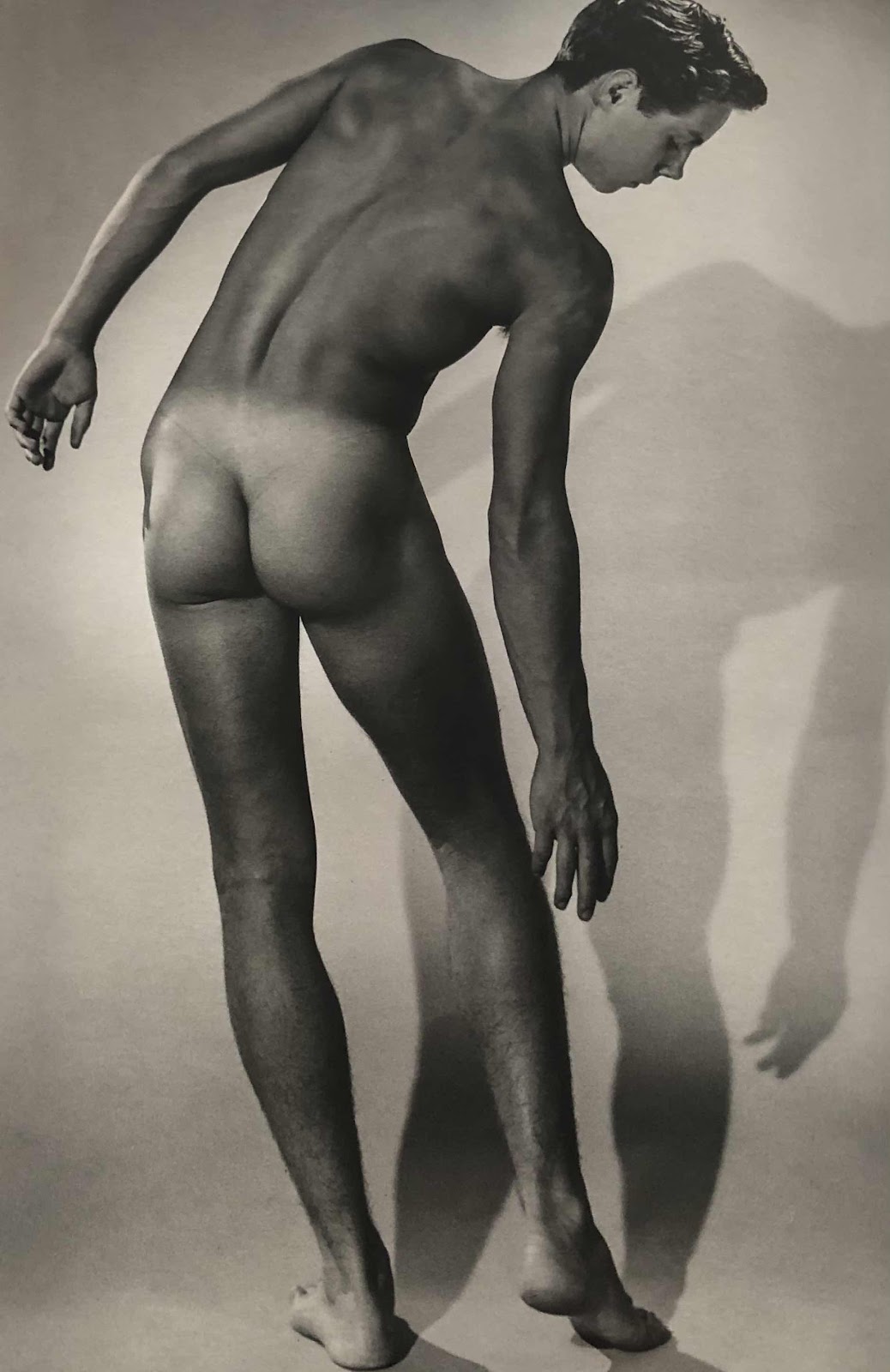 |
Guglielmo Plüschow, "Untitled" (Date Unknown) |
The photography of the male nude occupies a rich and multifaceted space in visual history. From its emergence in the 19th century to its entwinement with queer identity and sexual liberation in the 20th, the male nude has been variously categorized as artistic, erotic, art-erotic, or pornographic. These categories—though often overlapping—are shaped by aesthetic choices, social context, and the photographer’s intent. While definitions remain fluid, understanding their distinctions helps trace the evolution of male imagery, censorship, and desire across time.
 |
Guglielmo Plüschow, "Male Nude Seated on Leopard Skin" ( c. 1890s–1900s) |
Artistic male nudes are rooted in classical ideals of beauty, proportion, and human form. These works typically present the male body as a timeless object of contemplation rather than sexual desire. Photographers such as Wilhelm von Gloeden and Guglielmo Plüschow, working in late 19th-century Italy, produced pastoral, sepia-toned images of nude youths posed against ancient ruins or natural landscapes. The subjects, often draped in togas or standing in contrapposto, evoke Hellenistic sculpture. The aesthetic was elevated, not erotic framed as reference for artists or scholars.
 |
Bob Mizer, Athletic Model Guild, “Ted Bentley & Dick Kreutel” (c.1950s) |
 |
Bob Mizer, "Naked Young Man" (c.1950s) |
 |
Bob Mizer, "AMG model Jim Grant" (1949) |
Erotic male nudes, by contrast, are designed to evoke desire. While still avoiding explicit content, they emphasize sensuality and allure. Studios like the Athletic Model Guild, founded by Bob Mizer in 1945, epitomize this genre. Mizer’s models were often young, muscular, and photographed in minimal attire—usually posing straps. Though presented as 'model studies' or athletic reference images, they were unmistakably charged with homoerotic appeal. A classic example is AMG model Jim Grant in 1949 or his "Naked Young Man," their body carefully composed for aesthetic and erotic impact.
 |
Robert Mapplethorpe, “Thomas” (1986) |
 |
| Robert Mapplethorpe, “Thomas” (1986) |
 |
| Robert Mapplethorpe, “Thomas” (1986) |
 |
| Robert Mapplethorpe, “Thomas” (1986) |
Between these poles lies the hybrid category of art-erotic nudes—images that deliberately blend aesthetic ambition with erotic suggestion. Photographer Robert Mapplethorpe redefined this space in the 1970s and ’80s. His studio portraits of Black male nudes, leather-clad figures, and homoerotic still lifes challenged museum conventions while embracing overt sensuality. His 1986 photograph of bodybuilder Thomas—posed like a neoclassical statue but fully exposed—is both starkly erotic and compositionally exquisite. Earlier precedents include F. Holland Day’s self-portraits as St. Sebastian, which straddle martyrdom and homoerotic reverence.
 |
COLT Studios, “Buddy Houston” (c.1979) |
Still photo pornography occupies the far end of the spectrum, with imagery created explicitly for sexual arousal. With the loosening of obscenity laws in the 1960s and 1970s, studios like COLT, Falcon, and Target began publishing full-frontal male photography, often themed around working-class or hypermasculine fantasies. A 1970s COLT photo set of model Buddy Houston, fully nude and posed with a cowboy, exemplifies this genre. Here, the goal is no longer suggestion or metaphor, but direct sexual gratification—often accompanied by narratives or visual cues designed to stimulate.
 |
F. Holland Day, “Saint Sebastian” (1906) |
These categories—artistic, erotic, art-erotic, and pornographic—are best understood as points along a continuum rather than rigid definitions. A single image might be interpreted differently depending on the viewer, setting, or historical moment. In 1964 United States Supreme Court Justice Potter Stewart described his threshold test for obscenity in Jacobellis v. Ohio by saying:
I shall not today attempt further to define the kinds of material I understand to be embraced within that shorthand description ["hard-core pornography"], and perhaps I could never succeed in intelligibly doing so. But I know it when I see it, and the motion picture involved in this case is not that.
In gallery spaces, an image may be framed as art; in private, it may serve a different function altogether. For LGBTQ+ audiences, especially during eras of repression, these images carried layered meanings: as mirrors of desire, acts of defiance, and moments of recognition. Their legacy continues to shape how we view the male body, beauty, and freedom.
4 comments:
Wonderful article. I’ve been reading about Lynes’ photography in the book Body Language. Strange how artists had to be so careful with their work during the first half of the 20th century.
I plan to do a future one of these about Lynes. I've always loved his work.
Joe, what do you think https://www.ebay.fr/itm/226423179571 ?
Fotografen haben schon immer nach dem Ideal und der Perfektion männlicher Schönheit gesucht, genau wie das Hellas der Antike. Sie lassen sich in ihrem Streben nach männlicher Schönheit vom antiken Hellas inspirieren.
(vvs)
Post a Comment